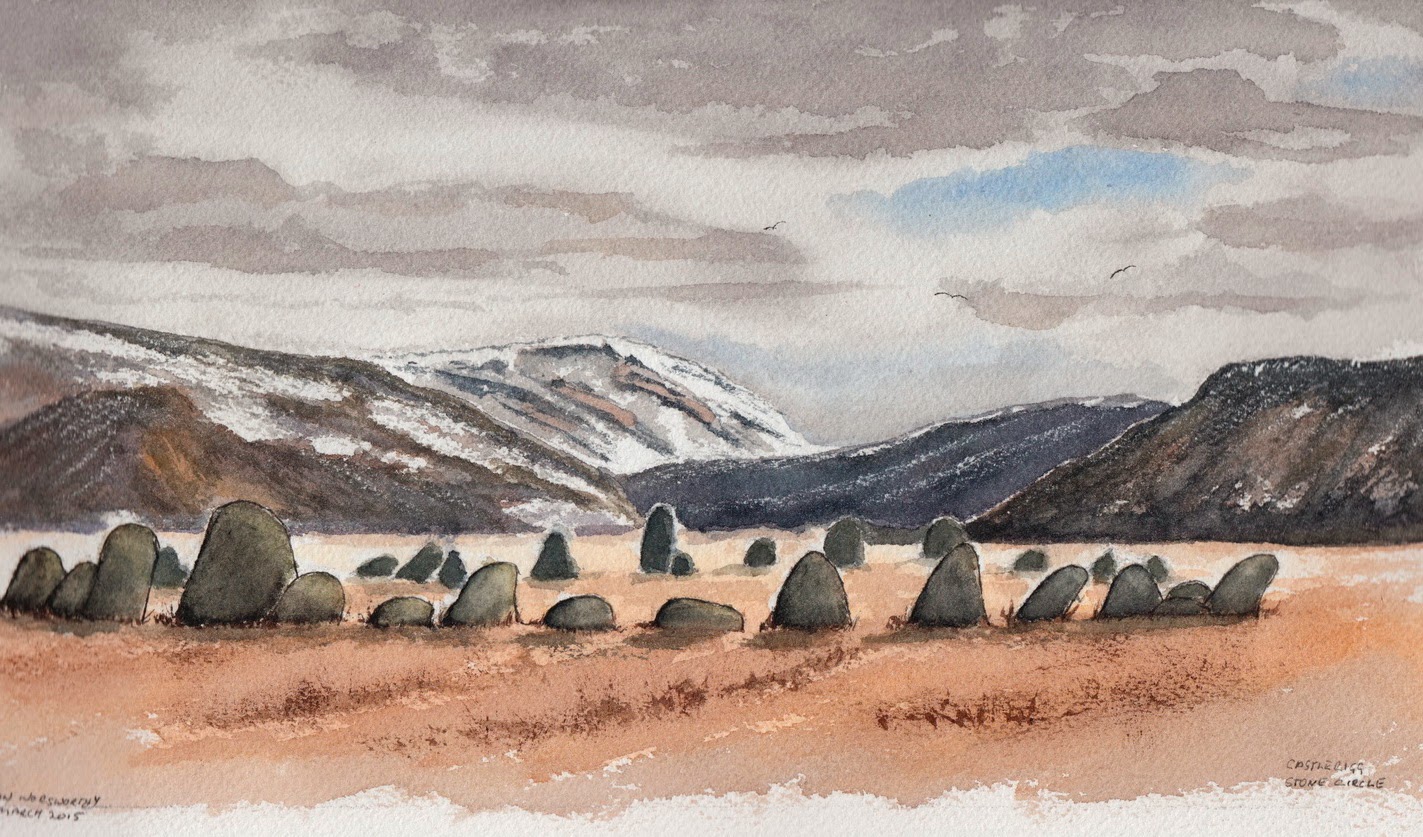“One
of the advantages of painting over photography is you don't have to
be there to record an image”!
I
put this as an intro to a painting I did this week, the scene was of
the Castlerigg Stone Circle in Cumbria; one of the most spectacular
places in what is one of the most unbelievably beautiful regions of Britain and one of my favourites.
This circle stands atop a plateau surrounded by some of the highest and ancient Cumbrian peaks; alone with nothing but the wind and the ravens for company.
Thought
to have been constructed in 3200bc (5000 years ago) it is one of the
oldest circles in Europe.
As I mentioned the surrounding peaks are some of
the highest in England;
Helvellyn
standing at almost 950 m (3100
ft)
Skiddaw
a close second at at 931 m (3,054 ft)
Blencathra,
also known as Saddleback, with six separate fell tops, of which the
highest is the 868-metre (2,848 ft) Hallsfell Top.(at the centre of
the painting).
However
they don't look that high, that is because the plateau on which the
circle stands is already at 213m (700ft) above sea level
Here
endeth the history lesson ;-)
Happy
Spring Equinox / Eostre
One
of the deepest impulses in man is the impulse to record, - to scratch
a drawing on a tusk or keep a diary, to collect sagas and heap
cairns. This instinct as to the enduring value of the past is, one
might say, the very basis of civilization. ~John Jay Chapman,
Memories
and Milestones

No comments:
Post a Comment